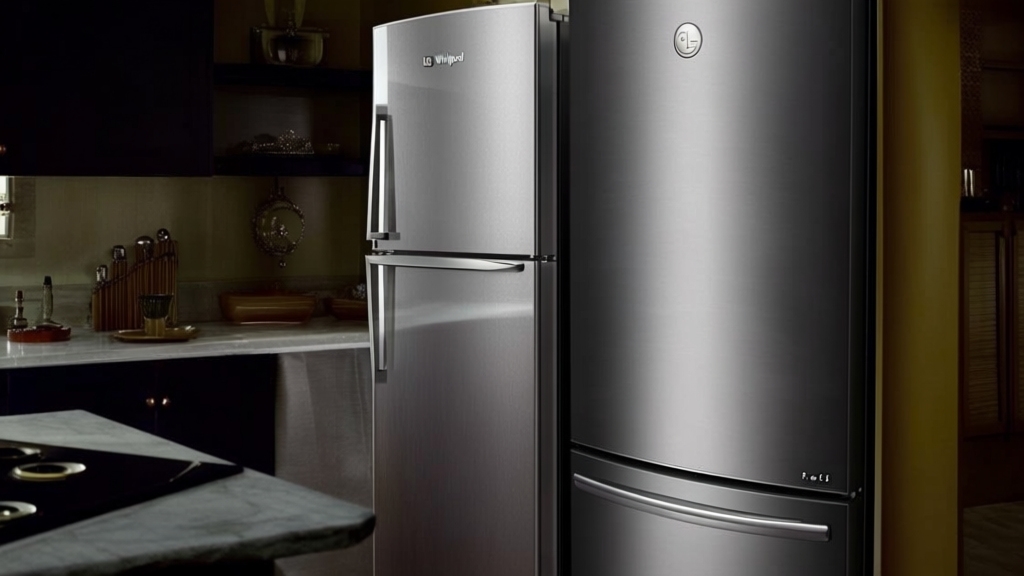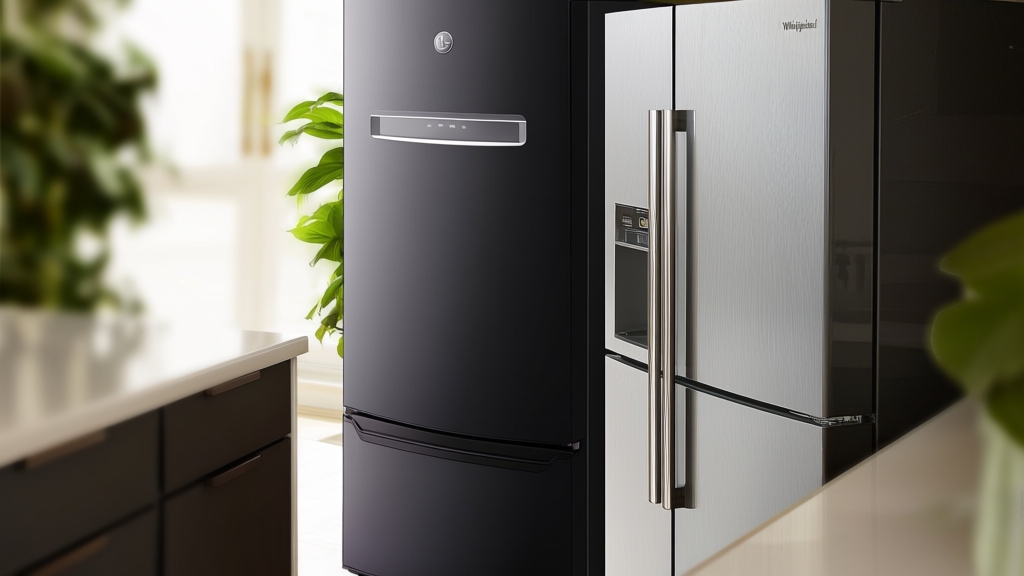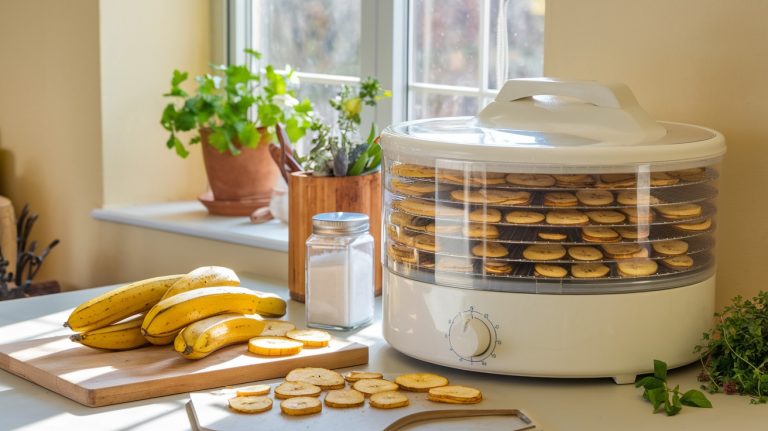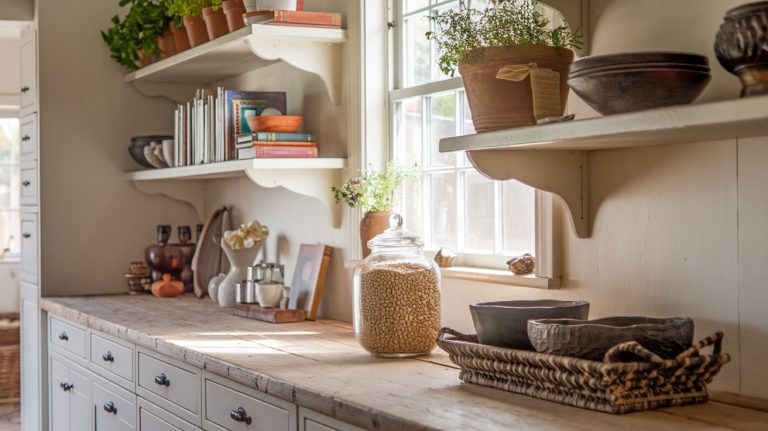LG Refrigerator vs Whirlpool Refrigerator: Top Differences
If you want sleek designs and smart features like Wi-Fi control, LG excels with advanced cooling and energy efficiency but may require pricier repairs.
Whirlpool offers proven reliability, easier maintenance, and practical storage at a more budget-friendly price, focusing on durability over high-tech.
Both brands use eco-friendly tech, but LG leans into innovation while Whirlpool prioritizes simplicity and service support. To pick the best fit, consider how much you value technology versus straightforward dependability.
- Total (cu. Ft.): 27.8 / Fridge: 18.6 / Freezer: 9.2
- LG SmartThinQ Technology
- Slim SpacePlus Ice System
Key Takeaways
- Whirlpool refrigerators are renowned for durability, reliability, and easier maintenance with fewer repair issues over time compared to LG models.
- LG offers advanced smart features, sleek designs, and energy-efficient technologies like Linear Cooling and app connectivity for modern users.
- Whirlpool focuses on practical storage, traditional design, and straightforward usability, appealing to consumers prioritizing simplicity and reliability.
- LG refrigerators may have higher repair complexity and costs due to sophisticated systems, while Whirlpool benefits from extensive service support networks.
- Whirlpool generally provides better customer satisfaction with fewer complaints, whereas LG targets premium markets with innovative but sometimes less reliable appliances.
At a Glance: LG and Whirlpool Refrigerator Comparison
| Feature Category | LG Refrigerator | Whirlpool Refrigerator |
|---|---|---|
| Smart Technology | ThinQ app, Wi-Fi, Google Assistant, Alexa | Limited smart features, basic connectivity |
| Cooling Technology | Linear Cooling™, Door Cooling+™, Multi-Air Flow | 6th Sense Deep Freeze, Dual Evaporators |
| Energy Efficiency | Inverter Linear Compressor, up to 30% savings | Adaptive Defrost, variable-speed compressors |
| Design Style | Sleek modern, premium finishes, LED lighting | Classic practical design, straightforward aesthetics |
| Capacity Range | 22.5-26.5 cubic feet (counter-depth) | 20-23.8 cubic feet (counter-depth) |
| Reliability Rating | Good features, some door alignment issues | Fewer repair complaints, easier maintenance |
| Noise Level | Quieter operation, advanced insulation | Moderate noise, occasional vibration |
| Storage Features | InstaView Door-in-Door, CustomChill drawers | Adjustable shelving, in-door can caddies |
| Best For | Tech enthusiasts, modern kitchens, energy savings | Budget-conscious buyers, simple reliability |
Brand Reputation and Legacy

While Whirlpool has built its reputation over more than a century as a durable and reliable American appliance brand, LG has rapidly expanded its presence by blending South Korea’s electronics expertise with innovative appliance design.
Both brands have increasingly incorporated energy-efficient technologies to meet modern consumer demands and environmental standards.
When you consider legacy, Whirlpool’s deep roots since 1911 mean you benefit from a brand known for pioneering appliance standards, especially in North America.
LG, founded in 1958, entered appliances later but quickly leveraged its electronics background to capture global markets, including Asia, Europe, and North America.
You’ll find Whirlpool often praised for reliability and ease of repair, while LG appeals with sleek designs and technology integration, though it’s faced some quality concerns historically. Six out of seven appliance repair professionals recommend avoiding LG due to reliability concerns, highlighting a key difference in service perceptions.
Innovative Technology and Features
When comparing LG and Whirlpool, you’ll notice LG’s smart ThinQ app offers remote control and AI-driven cooling adjustments that learn your habits for peak efficiency.
LG refrigerators also feature an AI Saving Mode that adjusts cooling based on low-usage behavior to save energy. Whirlpool matches this with voice assistant compatibility and internal cameras for inventory checks, focusing on convenience and connectivity.
Both brands also employ advanced cooling technologies. LG’s Linear Cooling™ and Door Cooling+™ aim to minimize temperature fluctuations. Whirlpool emphasizes adaptive temperature management to maintain consistent freshness.
Smart Connectivity Options
Because smart connectivity has become a key factor for many buyers, understanding how LG and Whirlpool incorporate innovative technology is essential. LG leads with Wi-Fi connectivity, app control via LG ThinQ, and integration with Google Assistant and Alexa.
You can adjust temperatures remotely, receive notifications, and use smart sensors for automatic settings. These features reflect the trend toward adjustable technology that enhances user convenience and control.
Whirlpool, on the other hand, offers limited smart features, focusing on durability and simplicity without app or voice assistant support. Despite this, Whirlpool still competes strongly in technological innovation by implementing essential features like Adaptive Defrost and Dual Evaporators to maintain humidity control.
| Feature | LG Refrigerator | Whirlpool Refrigerator |
|---|---|---|
| Wi-Fi Connectivity | Yes, via LG ThinQ app | No |
| Voice Assistant | Google Assistant, Alexa supported | Not supported |
| Remote Management | Yes, full remote control | No |
| Smart Notifications | Door open, component alerts | No |
| Smart Sensors | Automatic adjustments | Limited adaptive tech |
Advanced Cooling Technologies
As you explore advanced cooling technologies, both LG and Whirlpool bring distinct innovations that enhance food preservation and temperature control.
LG’s Advanced Multi-Air Flow and Triple Evaporator systems ensure even cooling and independent humidity control. These features contribute to maintaining optimal freshness by preventing uneven moisture levels in different compartments.
Meanwhile, Whirlpool’s 6th Sense Deep Freeze and chilling gel tech focus on rapid freezing and consistent temperature. Both brands use inverter compressors for energy efficiency. However, LG’s Inverter Linear Compressor adjusts exactly to usage patterns, offering more precise control and ergonomic design benefits that improve overall appliance usage.
Key differences include LG’s Door Cooling+ that targets door areas directly, whereas Whirlpool uses antibacterial Flexi vents. Additionally, Whirlpool’s MicroBlock technology inhibits bacteria, while LG offers CustomChill drawers for flexible storage.
LG’s InstaView Door-in-Door feature minimizes cold air loss, enhancing energy efficiency. LG is also known for integrating smart connectivity in many models, allowing users to monitor and control their refrigerators remotely.
On the other hand, Whirlpool emphasizes durable compressors and practical storage features.
Energy Efficiency and Environmental Impact

When choosing between LG and Whirlpool, you’ll find both offer ENERGY STAR® certified refrigerators that help cut power consumption and save on electricity bills. These models are designed to operate efficiently without overcrowding the compressor, ensuring consistent performance.
LG emphasizes eco-friendly manufacturing and innovative compressor technology to reduce energy use. Whirlpool focuses on durable designs and adaptive features to maintain efficiency.
Understanding these differences can help you pick a model that aligns with your energy-saving goals and environmental values. Additionally, LG refrigerators are designed for eco-friendly operation with minimal noise, enhancing both sustainability and user comfort.
Energy Star Certifications
How do LG and Whirlpool refrigerators compare in energy efficiency and environmental impact? Both brands offer ENERGY STAR certified models that use at least 15% less energy than non-certified ones. This helps reduce your electricity bills and carbon footprint. Using appliances with energy-efficient features contributes to overall sustainable household management.
LG models generally consume slightly less power, thanks to advanced inverter compressors and smart sensors. Whirlpool also delivers efficient options with variable-speed compressors and LED lighting.
When choosing, consider these points:
- ENERGY STAR certification ensures compliance with EPA standards.
- LG’s inverter tech and door-in-door design optimize energy use.
- Whirlpool provides diverse sizes with efficient cooling features.
- Both brands support rebates and recycling programs, enhancing eco benefits.
- Choosing Energy Star models from either brand can lead to long-term savings on energy bills.
Your choice depends on specific features and budget, but both mitigate environmental impact effectively over their lifespan.
Eco-Friendly Manufacturing Practices
Although both LG and Whirlpool prioritize eco-friendly manufacturing, Whirlpool’s extensive Zero Waste to Landfill initiatives and ambitious Net Zero emissions target by 2030 demonstrate a robust commitment to sustainability in its production processes. Manufacturers to inspect for gaps continuously to ensure efficiency and prevent waste in their systems.
Whirlpool has achieved Zero Waste to Landfill status at all major plants and focuses on circular economy principles, promoting material reuse and waste elimination. It also targets a 100% renewable electricity transition and invests in carbon offsets to meet its emissions goals.
LG, meanwhile, adopts renewable energy and recyclable materials, emphasizing innovation in lifecycle sustainability and repairability.
While both brands reduce environmental impact, Whirlpool’s transparent, detailed progress and sweeping strategies in waste diversion, emissions reductions, and sustainable product certifications give you a clearer picture of its leadership in eco-friendly manufacturing practices.
Additionally, Whirlpool’s certification aligns with the UL ECVP 2799 standard requiring at least 95% waste diversion from landfills, underscoring the rigor of its environmental efforts.
Power Consumption Reduction
Since energy consumption directly affects both your electricity bill and environmental footprint, choosing a refrigerator with advanced efficiency technologies matters.
LG’s Inverter Linear Compressor and multi-air flow systems typically reduce electricity use by up to 30% compared to conventional models, offering efficient heat conduction that enhances overall performance.
Whirlpool counters with Adaptive Defrost and Dual Evaporators, optimizing humidity and cooling for energy savings.
Both brands offer ENERGY STAR certified models and use low-GWP refrigerants to minimize environmental impact. New technologies like these are essential as federal standards continue to push for lower energy use in appliances.
When deciding, consider these key points:
- LG’s inverter technology often yields lower average energy consumption.
- Whirlpool’s efficient defrost cycles can match savings in select lines.
- Both brands’ smart features enable remote and dynamic energy management.
- Size and design (top-freezer, fewer doors) greatly influence power use.
You’ll find both brands balancing efficiency and environmental responsibility effectively.
Design Aesthetics and Capacity Options
When choosing between LG and Whirlpool refrigerators, you’ll find distinct approaches in design aesthetics and capacity options that cater to different priorities.
LG impresses with sleek, modern exteriors and advanced LED lighting, emphasizing style and spacious counter-depth models averaging 22.5 to 26.5 cubic feet. Both brands provide hidden hinges and reversible doors for flexible installation.
LG combines sleek design with advanced LED lighting and roomy counter-depth models for stylish, spacious kitchens.
Whirlpool focuses on practicality, offering adjustable shelving, in-door can caddies, and multiple smaller compartments for organized storage. However, its counter-depth models are slightly smaller, around 20 to 23.8 cubic feet. Efficient airflow management through ventilation systems can also impact overall appliance performance.
LG leads in French door variety with about 73 designs, while Whirlpool offers more top freezer models. Additionally, LG refrigerators often feature smart WiFi connectivity for enhanced user convenience.
Ultimately, if you prioritize contemporary design and larger capacity, LG stands out. However, Whirlpool excels in maximizing storage usability and practical compartmentalization for everyday convenience.
Reliability and Customer Satisfaction
Beyond design and capacity, reliability and customer satisfaction play a significant role in choosing between LG and Whirlpool refrigerators.
Whirlpool generally earns higher marks for reliability, with fewer repair complaints and easier access to parts. LG, while praised for advanced features and quiet operation, faces issues like door misalignment and water filter leaks.
Understanding the importance of maintenance can help users extend the lifespan of their appliances. Consider these points when deciding:
- Whirlpool tends to have fewer service calls and simpler repairs. Its long-standing presence in the US and extensive service infrastructure make support more accessible for customers.
- LG offers a longer labor-inclusive warranty on key sealed components.
- Customer satisfaction for Whirlpool often centers on durability and service ease.
- LG users appreciate technology but may encounter more frequent maintenance.
Smart Home Integration and Connectivity
Since smart home integration has become a key factor for many buyers, LG and Whirlpool approach connectivity and app control quite differently.
LG’s refrigerators offer robust Wi-Fi connectivity via the ThinQ app. This enables you to control temperatures, ice makers, and receive detailed alerts like door open or filter changes. Additionally, LG’s use of an inverter linear compressor enhances energy efficiency alongside its smart features.
Whirlpool provides Wi-Fi in select models, focusing on essential remote monitoring with fewer smart notifications. Consider these differences:
- LG supports multiple voice assistants (Google Assistant, Alexa); Whirlpool has limited voice integration.
- LG ThinQ app offers advanced diagnostics and maintenance tips; Whirlpool’s app provides basic alerts.
- LG integrates deeply with smart home ecosystems; Whirlpool prioritizes straightforward connectivity.
- LG’s app includes family shopping lists and recipe links; Whirlpool’s app focuses on core functions.
Choosing the Right Refrigerator for Your Needs
Choosing the right refrigerator means balancing your priorities between style, storage, efficiency, and features.
If you want a sleek, modern look with smart tech like InstaView and remote control, LG stands out. Whirlpool focuses on classic design and practical features, often at a lower price point.
Consider these key factors:
- Design: LG offers contemporary aesthetics; Whirlpool suits traditional kitchens.
- Storage: LG’s Door-in-Door® and Flexi-Slide™ bins versus Whirlpool’s Custom-Flex Temp drawers.
- Efficiency: LG’s Smart Inverter Compressor contrasts with Whirlpool’s adaptive defrost system. Both brands often surpass Energy Star standards for energy efficiency, helping reduce electricity bills and environmental impact.
- Technology: LG leads in smart connectivity; Whirlpool emphasizes practicality.
Your choice depends on whether you value innovation and style or affordability and everyday functionality.
Frequently Asked Questions
Are LG or Whirlpool Refrigerators Quieter During Operation?
Think of your kitchen as a quiet sanctuary—LG refrigerators are like soft whispers, often running quieter thanks to advanced insulation and multi-vent cooling that reduce compressor noise.
Whirlpool models, while reliable, sometimes hum louder due to their energy-focused compressors and occasional vibration issues. If you value peaceful operation, LG tends to edge out Whirlpool, especially in open-plan spaces.
Still, proper installation plays a big role in how quiet either brand feels to you.
Do Either LG or Whirlpool Refrigerators Have Specialized Compartments for Wine Storage?
You’ll find that LG offers specialized wine cellar refrigerators with multi-temperature zones, humidity control, and vibration reduction, designed specifically for wine storage.
Whirlpool, on the other hand, doesn’t typically include dedicated wine compartments in their refrigerators. While Whirlpool’s models have versatile storage, they don’t focus on wine preservation.
Can LG or Whirlpool Refrigerators Be Integrated With Third-Party Smart Home Systems?
You can integrate LG refrigerators with third-party smart home systems through the LG ThinQ platform and its API, allowing control via Home Assistant and other compatible platforms.
Whirlpool refrigerators mainly support Amazon Alexa and Google Assistant integrations, with limited options like IFTTT for automation.
LG offers broader API access and custom integrations, while Whirlpool focuses on voice assistants and proprietary cloud services, so your choice depends on how open and flexible you want your smart home setup.
What Are the Common User Interface Differences Between LG and Whirlpool Fridge Controls?
You’ll notice LG’s fridge controls use larger, backlit touchscreens with clear icons, offering detailed feedback like temperature and humidity settings. Whirlpool leans on simpler button-based controls with fewer customization options, focusing on essential functions.
LG often includes dispenser lights and mode buttons for convenience, while Whirlpool keeps things straightforward with tactile buttons and basic alarms.
Your Next Step: Choosing the Perfect Refrigerator Match
Choosing between an LG and a Whirlpool refrigerator is like picking the perfect compass for your kitchen journey. LG dazzles with cutting-edge tech and sleek design, while Whirlpool stands firm on reliability and classic appeal.
Both offer energy-smart options and solid support, so your decision hinges on whether you value innovation’s sparkle or trusted consistency. Whichever you choose, you’ll find a fridge ready to keep your culinary world cool and running smoothly.
- Sleek, Minimalist Design
- Access Fresh Filtered Water
- Keeps Produce Fresh Up To 2x Longer
Last update on 2025-12-28 / Affiliate links / Images from Amazon Product Advertising API









